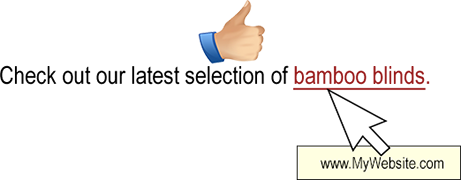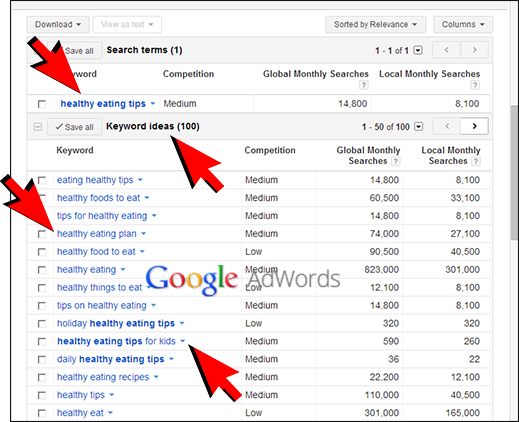If you’re writing web content you’re in luck—in our digital age you’re likely to have more readers awaiting your words than print media writers do. However, there is a catch.
A study conducted by Poynter University revealed that by the end of 2010 more people were reading the news online than in print newspapers. The increase in the number of people turning to the Internet for content does not mean that anything goes when it comes to web copywriting. You’ve still got to hook your readers and make sure they read what you’ve written without getting bored after a paragraph or two.
You’ve got 10 seconds!
Many web page visits are less than 10 seconds in length! That’s according to a study of web use published in the ACM Transactions for the Web journal. Added to this, 25% of all documents are displayed on the screen for less than 4 seconds.
If you think about how people often read copy from their mobile devices, it’s easy for them to get distracted by so many other things, such as e-mail notifications and Twitter mentions. Added to this, if the copy does not give the reader whatever they are looking for, whether that is quick information on heartburn or Pilates instructors in their area, they will move on.
So what do you do? You want to write web copy that grabs the reader’s attention and sells something, whether that is a product or an idea, right? To achieve this, it could be a good idea to see how web content differs from articles that appear in print, especially if you are accustomed to writing for print media. Some people jump from writing print articles to web content and make the mistake in thinking it’s the same thing.
It’s not. There are important differences.
Web copy vs. Print copy
Do they read or merely scan?
![]() Distractions aside, people reading web copy are likely to scan through it because online content often has less ways to grab people’s attention than newspaper articles that can make use of massive headlines and pictures. Plus, online media is about providing fast results! There’s no time to sit and read through it all, as one might with a newspaper.
Distractions aside, people reading web copy are likely to scan through it because online content often has less ways to grab people’s attention than newspaper articles that can make use of massive headlines and pictures. Plus, online media is about providing fast results! There’s no time to sit and read through it all, as one might with a newspaper.
Paragraph power
 In print media, paragraphs usually separate ideas. In web copy, they should be smaller bites of information without exceeding a maximum of five sentences. Long paragraphs visually exhaust the reader because they resemble large obstacles to overcome.
In print media, paragraphs usually separate ideas. In web copy, they should be smaller bites of information without exceeding a maximum of five sentences. Long paragraphs visually exhaust the reader because they resemble large obstacles to overcome.
Clickable links
 Digital content offers other ways to pull reader interest that newspapers do not have, such as clickable links. These can work in your favor!
Digital content offers other ways to pull reader interest that newspapers do not have, such as clickable links. These can work in your favor!
No narratives
 In print media the focus is usually on linear content. Readers focus on letting you as the writer lead the way for them with a story. Digital content, on the other hand, focuses on solution-hunting. Storytelling, such as in the form of anecdotes, interrupts the reader’s main goal: to hunt for solutions.
In print media the focus is usually on linear content. Readers focus on letting you as the writer lead the way for them with a story. Digital content, on the other hand, focuses on solution-hunting. Storytelling, such as in the form of anecdotes, interrupts the reader’s main goal: to hunt for solutions.
How to pull more readers
Here are some tips when writing web copy to pull the readers to your page:
1. Link it up
When writing web copy you have the chance to add links to your articles. These links can lead to other pages on the internet to provide readers with more information on the topic, or to something you want to sell.
For example, if you’re selling window blinds, you could write:
 The words “bamboo blinds” would be the anchor text displaying a link to your product page. This is much more effective than making the anchor text something mundane such:
The words “bamboo blinds” would be the anchor text displaying a link to your product page. This is much more effective than making the anchor text something mundane such:
 The words “click here” do not highlight the important words—bamboo blinds—which is what readers are interested in viewing.
The words “click here” do not highlight the important words—bamboo blinds—which is what readers are interested in viewing.
2. Get to the point
To get to the basics of what you want to say, ask yourself: “Why is the reader interested in reading this topic?”
For instance, if you’re writing about the latest décor trends, your reader is probably keen to update their house or looking for budget-friendly do-it-yourself tips.
3. Get to the point
Make sure that your copy is quick and efficiently gives the reader important information. You can do this by:
- Breaking long paragraphs into shorter, snappier ones.
- Using various methods to enable quicker scanning of articles, such as lists, bullet points and bold sub-headings.
- Avoiding long and creative intros. Even though they could be well written, the reader probably won’t have time to immerse him/herself into your creative efforts.
4. Use keywords
Use words and phrases that people commonly search for on Google as these can boost your article’s search optimization. However, don’t overuse keywords as this can make your writing become annoyingly repetitive or lack the depth of offering your readers something useful.
Google Adwords Keyword Tool is a tool that provides information on various keywords and how many monthly searches are conducted for them. Before you write your article, go to Google Adwords and type in a word that summarizes what your article will tackle.
For instance, the phrase could be “healthy eating tips.” The results will show that the highest searched keywords related to this topic include things such as “healthy eating plan” and “healthy eating tips for kids.”
 Now you can add the most popular keywords into your article to make it more visible on the internet.
Now you can add the most popular keywords into your article to make it more visible on the internet.
5. Start with the most important informations
Print and online media do have something in common: their use of the inverted pyramid. This pyramid refers to the technique of placing the most newsworthy information first in an article before any background information or details.
This pyramid provides readers with the crux of the article so that even if they don’t read it entirely they will still know what it’s about. The further down the article you scroll, the more readers are going to be decreasing in numbers, so leave the less-important things down there.
6. Don’t let eyecatching be an eye-sore
Make your copy as eye-friendly as possible. Keep your grammar and spelling excellent, and avoid too much italicizing, CAPITALS or highlighting. Although some of these techniques can be good to bring attention to words, you want to use them sparingly so that they do not overcrowd your copy or make it look like a marketing gimmick.
7. If you’ve got lots to say…
Sometimes you can’t help it: your web article is long and you can’t shorten it. Maybe there is a lot to say on a subject and all your points are important. Whatever the case, when writing web copy that’s longer, consider the use of a summary at the top of the page. This summary should consist of one or two sentences and it gives readers a quick, clear view into what the article is about. They’ll thank you for giving them a highlight and not wasting their time, especially if the article does not contain information they need.
About the author:
 Giulia Simolo is a freelance journalist who has always been passionate about writing. A regular contributor to various websites and publications, Giulia has garnered a lot of experience as a freelance writer and enjoys sharing this with others who wish to enter the exciting field of journalism. You can follow her on Facebook and Twitter.
Giulia Simolo is a freelance journalist who has always been passionate about writing. A regular contributor to various websites and publications, Giulia has garnered a lot of experience as a freelance writer and enjoys sharing this with others who wish to enter the exciting field of journalism. You can follow her on Facebook and Twitter.
Also by Giulia Simolo:
1. When Words Meet Pictures (article)
2. How to Write Riveting Book Reviews (article)
3. How to Write the Perfect Article Pitch (article)
4. Writing E-Mails to Editors (article)
5. How to Write Gripping Subheadings (article)



